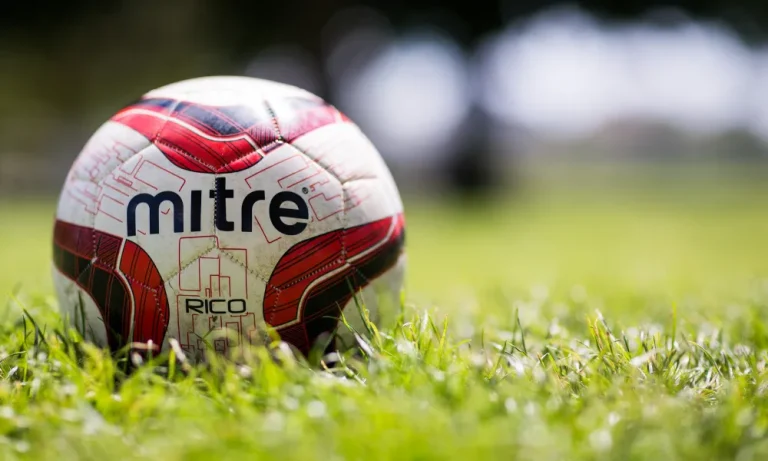Distinguish between Flag and Tackle Football
Are you ready to dive into the exhilarating world of football? Whether you’re a seasoned fan or a curious newcomer, understanding the differences between flag and tackle football is crucial. In this article, we will distinguish between flag and tackle football, shedding light on their unique characteristics and helping you make an informed choice.
What is Flag Football?

Flag football is a modified version of American football that offers a non-contact alternative to the traditional tackle football. Originating in the United States, flag football gained popularity as a recreational and competitive sport. The objective is still to score touchdowns, but instead of tackling opponents, players must remove their opponents’ flags to stop their progress.
In flag football, the basic rules and gameplay mechanics closely resemble those of tackle football. Teams consist of seven to eight players, and the field dimensions are typically smaller. The game is played in quarters or halves, with each team taking turns on offense and defense. The quarterback throws the ball to receivers, who attempt to advance it downfield while avoiding defenders. The absence of tackling makes flag football a safer alternative, reducing the risk of injuries.
Flag football offers different levels of competition, catering to players of all ages and skill levels. From recreational leagues to highly competitive tournaments, there is a place for everyone in the flag football community. Whether you’re a beginner looking to develop basic football skills or an experienced player seeking a less physically demanding option, flag football provides a platform for enjoyment, growth, and friendly competition.
What is Tackle Football?
Tackle football is the traditional and widely recognized version of the sport. With its historical roots tracing back to the late 19th century, tackle football has evolved into a physically demanding and highly competitive game. Unlike flag football, tackle football involves direct physical contact between players.
In tackle football, the fundamental rules and gameplay mechanics revolve around advancing the ball by running or passing while evading defenders. The objective is to score touchdowns by crossing the opposing team’s goal line. However, what sets tackle football apart is the physicality and contact involved. Players use tackling techniques to bring down opponents, adding an intense and strategic element to the game.
Tackle football offers different levels of competition, catering to players of various ages and skill levels. From youth leagues to high school, college, and professional football, there are opportunities for growth and advancement. Tackle football allows players to showcase their athleticism, strength, and tactical abilities, making it a thrilling and physically demanding sport.
How are Flag and Tackle Football Different?
Flag football and tackle football may share some similarities, but there are key differences in gameplay that set them apart. In flag football, the objective is to remove the opponent’s flags instead of tackling them. This eliminates the physical contact involved in tackle football, making flag football a safer alternative.
The rule variations and equipment used in each version also differ. In flag football, players wear flags that are attached to their waistbands, which are pulled by the defenders to signify a tackle. Tackle football, on the other hand, requires players to wear helmets, shoulder pads, and other protective gear to withstand the physical impact of tackles.
The scoring systems and strategies in flag and tackle football also vary. In flag football, touchdowns are worth six points, and teams often employ passing-heavy strategies to exploit the non-contact nature of the game. In tackle football, touchdowns are also worth six points, but the physicality of the game allows for a more balanced mix of passing and running plays.
Success in flag and tackle football requires different skill sets. Flag football emphasizes agility, speed, and precise flag-pulling techniques. Tackle football, on the other hand, places a premium on physical strength, tackling ability, and endurance. Both versions of the sport offer unique challenges and opportunities for players to excel.
Which One is Safer: Flag or Tackle Football?
When it comes to safety, both flag and tackle football have their own considerations. Flag football is generally considered to be a safer alternative because it eliminates the physical tackling involved in tackle football. Without the risk of direct contact, flag football reduces the chances of serious injuries such as concussions or broken bones.
However, tackle football does carry a higher risk of injury due to the physical nature of the game. Tackling and collisions can lead to injuries such as sprains, strains, fractures, and head trauma. It is important to note that proper coaching, training, and adherence to safety protocols can significantly minimize these risks in tackle football.
Both versions of football take protective measures to ensure player safety. In flag football, players wear belts with flags that are easily pulled instead of tackling. In tackle football, players wear helmets, shoulder pads, and other protective gear to cushion impacts and reduce the risk of head and body injuries. Additionally, both versions prioritize teaching proper technique and fair play to minimize the risk of accidents.
Which Version is More Suitable for Kids and Beginners?
When it comes to kids and beginners, both flag and tackle football have their own considerations. Flag football is often seen as more suitable for children and beginners due to its lower entry barriers and easier learning curve. The absence of physical tackling makes flag football less intimidating and allows participants to focus on learning the basic skills and rules of the game.
Flag football offers several developmental benefits for children. It helps them develop coordination, agility, and teamwork skills. The non-contact nature of the game also reduces the risk of injuries, making it a safer option for young players. Additionally, flag football allows children to understand the fundamentals of football in a more controlled and less physically demanding environment.
Tackle football, on the other hand, offers opportunities to learn advanced skills and techniques. It requires a higher level of physicality and demands a greater understanding of the game’s intricacies. Tackle football can be suitable for older children and beginners who are physically ready and willing to take on the challenges of the sport.
When deciding between flag and tackle football for kids and beginners, it is important to consider factors such as age, physicality, and experience levels. Younger children and those who are new to the sport may find flag football more appropriate, as it provides a foundation for learning while minimizing the risk of injuries. As players gain experience, develop physical strength, and become more comfortable with contact, they may transition to tackle football if they desire a more intense and physically demanding experience.
Flag vs. Tackle Football: Which is More Popular?
Both flag and tackle football have their own popularity and following. Flag football has seen a significant increase in participation over the years, especially among recreational leagues, schools, and community programs. Its non-contact nature and accessibility make it appealing to a wide range of players, including those who may not feel comfortable with the physicality of tackle football.
Tackle football, on the other hand, has traditionally been the more popular version of the sport, particularly at the high school, college, and professional levels. The allure of the physical challenge and the excitement of full-contact gameplay have contributed to its enduring popularity. Many fans and players enjoy the intensity and strategic aspects that come with tackle football.
Various factors have contributed to the rise in participation for both versions. The growth of flag football can be attributed to its inclusivity, lower risk of injuries, and the availability of leagues and programs tailored to different age groups. Tackle football’s popularity is driven by its long-standing tradition, media coverage, and the aspiration to compete at higher levels.
Notable professional leagues and events are associated with both flag and tackle football. The National Flag Football League (NFFL) and the American Flag Football League (AFFL) are prominent organizations that showcase the talent and competitiveness of flag football. Tackle football has renowned leagues such as the National Football League (NFL), college football championships, and high-profile events like the Super Bowl, which attract millions of viewers worldwide.
FAQs
What is the main difference between flag and tackle football?
Flag football is a non-contact version where players grab flags instead of tackling, while tackle football involves physical contact and tackles to stop opponents.
Are the rules similar in flag and tackle football?
The basic rules of football, such as scoring and field dimensions, are the same. However, the rules regarding tackling and contact differ significantly between the two versions.
Is flag football safer than tackle football?
Yes, flag football is generally considered safer as it eliminates the risks associated with physical tackles. However, proper technique and supervision are still important to prevent injuries.
Can you transition from flag football to tackle football?
Yes, many players transition from flag to tackle football as they gain experience and physical readiness. The skills and understanding developed in flag football can be beneficial in tackle football.
Which version of football is more suitable for beginners?
Flag football is often recommended for beginners due to its lower entry barriers and non-contact nature. It allows beginners to learn the fundamentals of the game in a less intimidating environment.
Conclusion
In conclusion, flag and tackle football each offer their own distinct experiences. Flag football provides a non-contact alternative, making it a safer and more accessible option for players of all ages and skill levels. On the other hand, tackle football offers the raw physicality and strategic depth that many enthusiasts crave. Ultimately, the choice between flag and tackle football depends on your preferences, goals, and circumstances.






